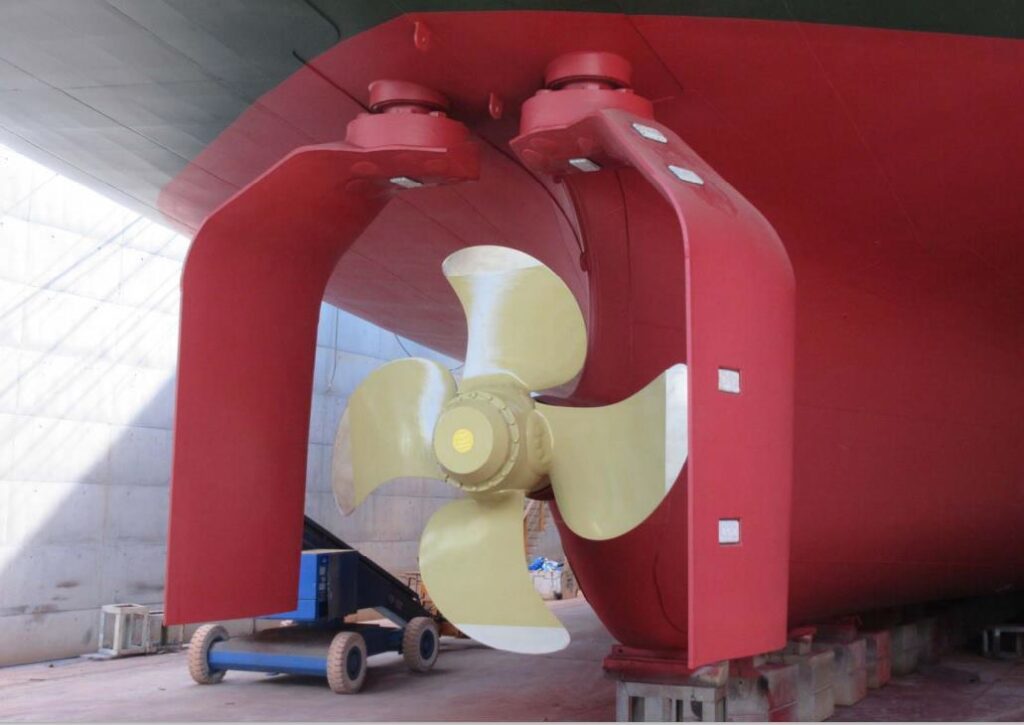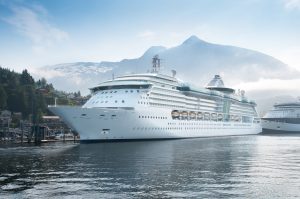A greener, more efficient rudder system, designed at the University of Strathclyde in Glasgow, will be demonstrated as part of a €6 million EU-funded research project.
The GATERS project led by the University of Strathclyde under the Horizon 2020 Fund will see the ‘gate rudder’ – a novel propulsion and steering system – retrofitted to a commercial vessel as part of a trial.
Unlike a traditional rudder which sits behind a ship’s propellers to steer the vessel, the U-shaped gate rudder – essentially two separate rudders – sits astride the propeller which, as a result, acts like a nozzle around the propeller and generates additional thrust.
Both rudders can be independently controlled to provide better steering as well as helping vessels move sideways – called crabbing – when docking, for example.
In early trials, the gate rudder has shown ‘remarkable’ fuel-saving potential of 15% in calm waters, while this can be as high as 30% in rough seas and improved manoeuvrability.
The gate rudder is also quieter than a traditional rudder system, reduces hull wake, and can help to protect the propeller from damage – particularly beneficial in sensitive environments such as the Arctic.
Professor Mehmet Atlar, who is the project coordinator from the Department of Naval Architecture and Marine Engineering (NAOME) at Strathclyde, said: “GATERS demonstrates significantly reduced emissions from ships particularly within coastal and port areas, challenging and even exceeding the current and future legislative requirements of the International Marine Organisation and local regulations for emissions.
“As a propulsor-based solution, the gate rudder offers a significant amount of power saving that cannot be achieved by any other single energy-saving device which is currently available in the market.
“An important advantage of the gate rudder system is highly effective manoeuvrability within coastal and port areas as well as navigating more efficient in waves during oceangoing operations. In addition, the gate rudder system is simple, generic and flexible and can be installed on new-built ships or retrofitted to existing ships, as well as integrated easily with other fuel-saving and emission reduction technologies. Based on these features, the gate rudder design presents a great prospect of replacing conventional design.”
The project brings together 18 technology experts and prime stakeholders, including the patent holder, Dr. Noriyuki Sasaki who is a Visiting Professor at NAOME, to demonstrate and exploit the benefits of this system.
The researchers will use data gathered from the sea trials to demonstrate for the first time whether the system could be applied to an existing 90m coastal cargo ship as a “retrofit” and to explore its applications for other oceangoing vessel types and sizes, hence, ultimately become the next generation propulsion and steering system for waterborne transport.
The concept of the gate rudder has been licenced to the world’s largest propulsion manufacturer Wartsila.
Asian container ports are the most efficient in the world, dominating the Top 50 spots according to the new global Container Port Performance Index (CPPI) launched by the World Bank and IHS Markit.
The report scored ports against different metrics, making the efficiency ranking comparable around the globe by assessing and standardizing for different ship sizes and container moves per call. The CPPI is intended to identify gaps and opportunities for improvement that will benefit stakeholders from shipping lines to national governments to consumers.
More than four fifths of global merchandise trade by volume is carried by sea, and approximately 35 percent of total volumes and over 60 percent of commercial value is shipped in containers.
“Inefficient port operations have a very direct impact on supplies across the country and their populations,” said Turloch Mooney, Associate Director, Maritime and Trade at IHS Markit. “During the COVID-19 pandemic we saw port delays causing shortages of essential goods and higher prices. Over the longer term such bottlenecks can mean slower economic growth, higher costs for importers and exporters and even resulting in less employment.”
East Asian ports dominate the CPPI, led by Yokohama in Japan ahead of King Abdullah Port in Saudi Arabia and Qingdao in China (pictured in photo). Algeciras in Spain is the highest-ranked European port, in 10th place. Colombo in Sri Lanka is the top-ranked port in South Asia at 17th place and Mexico’s Lazaro Cardenas leads the Americas at 25th.
Canada’s Halifax is the only other North American port in the Top 50. Djibouti, in 61st place, is the top-ranked African port.
Key port performance metrics such as minutes per container move show large discrepancies in global port efficiency, with top performers such as Yokohama taking just 1.1 minutes on average to load or unload a container in a standard port call while the average for equivalent workloads in African ports is more than three times that at 3.6 minutes.
The Container Port Performance Index is based on total port hours per ship call, defined as the elapsed time between when a ship reaches a port to its departure from the berth having completed its cargo exchange. Greater or fewer workloads are accounted for by examining the underlying data within ten different call size ranges. Five distinct ship size groups are accounted for in the methodology given the potential for greater fuel and emissions savings on larger vessels. Photo: University of Strathclyde








